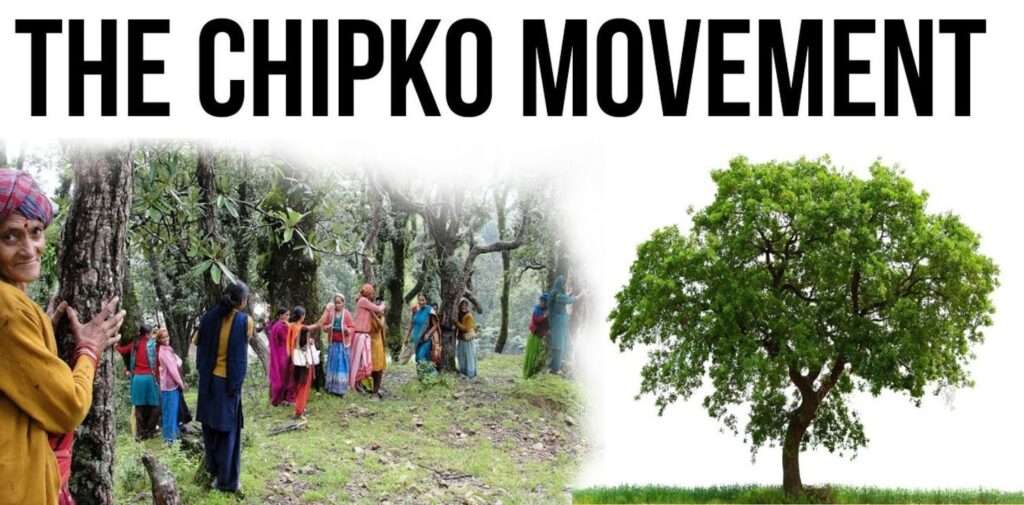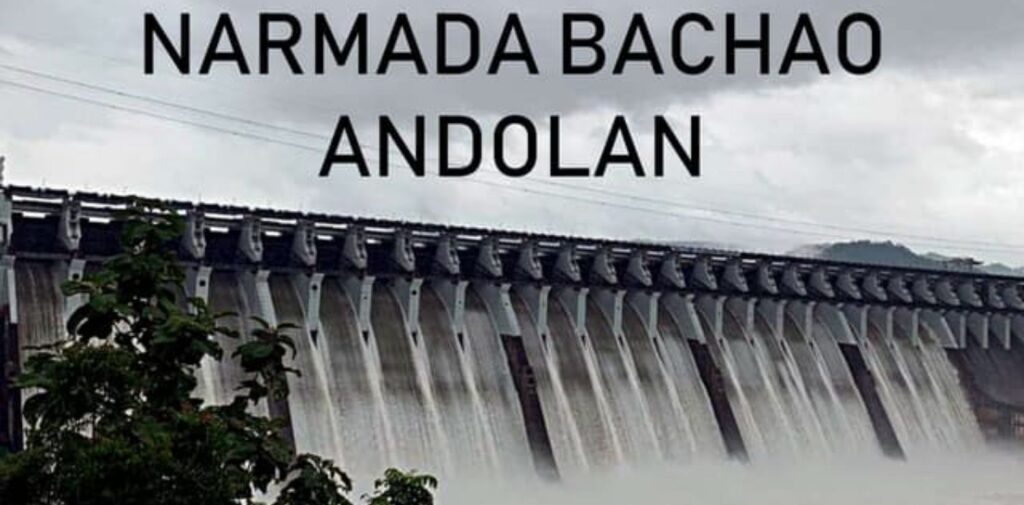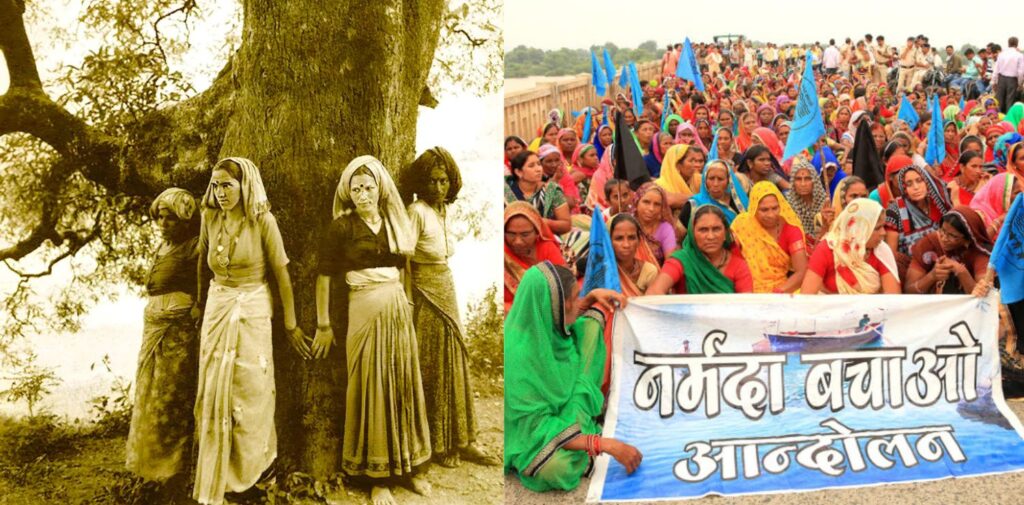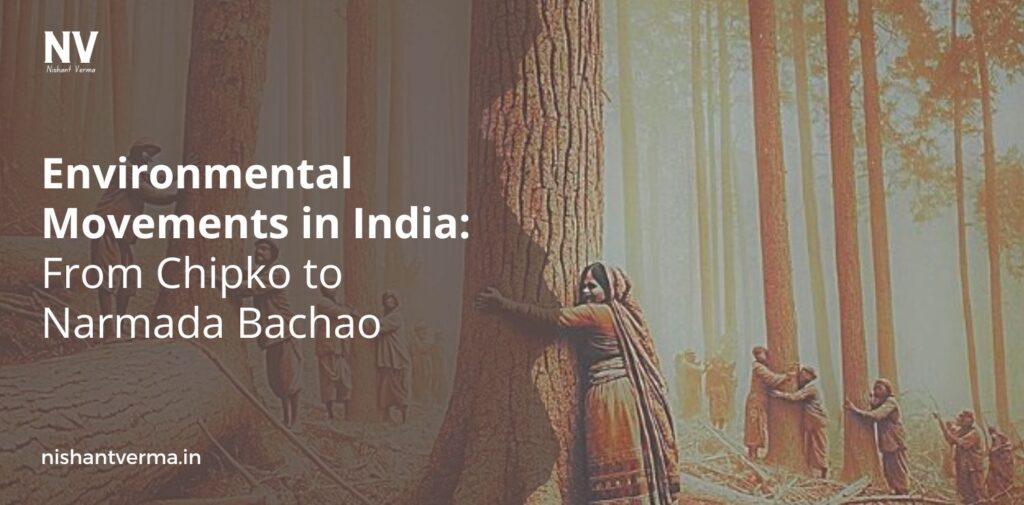India is home to some of the most significant environmental movements in history, showcasing the deep connection between people and nature. Two of the most notable Environmental Movements in India are the Chipko Andolan and the Narmada Bachao Andolan. These movements not only highlighted environmental issues but also brought communities together to fight for their rights and livelihoods. Let’s explore the origins, struggles, and impacts of these movements in detail.
The Chipko Movement: Embracing the Trees
Origins
The Chipko Movement began in the early 1970s in the Himalayan region of Uttarakhand. The word “Chipko” means “to stick” or “to cling” in Hindi. This movement emerged as a response to rampant deforestation, which was causing ecological imbalance and threatening the livelihoods of local communities.
The forests of Uttarakhand were crucial for the local economy. They provided wood, fuel, and medicinal plants, while also supporting wildlife. However, the government’s focus on logging for commercial gains led to widespread tree felling, endangering both the environment and the lives of those dependent on it.
Key Events
The movement gained momentum when, in 1973, villagers from the village of Reni faced the threat of losing their beloved trees to loggers. In a courageous act of resistance, women from the village, led by the determined Gaura Devi, hugged the trees to prevent them from being cut down. Their bravery inspired others across the region to join the cause, using non-violent protests to protect their forests.
As the movement spread, more villages adopted the same strategy. The sight of people embracing trees to save them became a powerful symbol of environmental activism. In 1980, the Indian government eventually recognized the importance of the movement and implemented a ban on tree felling in certain areas.

Impact
The Chipko Movement not only succeeded in protecting the forests but also raised awareness about environmental issues across India. It highlighted the importance of sustainable development and the need to consider local communities in environmental policies. The movement inspired countless other environmental initiatives in India and beyond.
Legacy
The legacy of Chipko continues to influence environmental policies and movements today. It demonstrated how grassroots activism could lead to significant changes, emphasizing the need for community involvement in conservation efforts.
Narmada Bachao Andolan: Fighting for Rivers and Rights
Origins
The Narmada Bachao Andolan (NBA) emerged in the late 1980s as a response to the construction of the Sardar Sarovar Dam on the Narmada River, which runs through the states of Madhya Pradesh, Maharashtra, and Gujarat. This dam was part of a larger project aimed at providing irrigation and hydroelectric power to the region.
While these goals appeared beneficial, the project threatened to displace thousands of people and submerge vast tracts of land, including forests and agricultural fields. Many affected communities, including indigenous people, were not adequately consulted or compensated for the loss of their homes and livelihoods.
Key Events
The movement was formally launched in 1989, led by activists like Medha Patkar. The NBA organized protests, rallies, and hunger strikes to draw attention to the plight of those who would be displaced. One of the most significant moments was the “Save Narmada” campaign, where activists marched along the river to raise awareness about the ecological and social impacts of the dam.
The movement attracted national and international attention, highlighting the struggles of marginalized communities and the environmental costs of large-scale development projects. Despite facing police repression and government opposition, the NBA remained resolute in its demands for justice and sustainability.

Impact
The Narmada Bachao Andolan became a crucial platform for discussing water rights, displacement, and environmental justice. It underscored the need for equitable development that respects the rights of local communities. The movement also played a vital role in shaping policies related to resettlement and rehabilitation of displaced populations in India.
The NBA’s influence extended beyond India, inspiring environmental movements worldwide, especially those focusing on river conservation and indigenous rights.
Legacy
The legacy of the Narmada Bachao Andolan is evident in ongoing discussions about dam construction, water management, and environmental rights. It remains a powerful example of how grassroots activism can challenge powerful interests and advocate for sustainable development.

Conclusion: The Power of Environmental Movements in India
Both the Chipko Movement and the Narmada Bachao Andolan represent the strength of community-led environmental activism in India. They remind us that people are not just passive recipients of development but active participants in shaping their destinies. These movements have had lasting impacts on environmental policies and continue to inspire new generations of activists.
As we face global challenges such as climate change, it is essential to learn from these movements. They teach us the importance of protecting our natural resources and ensuring that development benefits all, especially the most vulnerable communities. The stories of Chipko and Narmada remind us that when people come together for a common cause, they can create significant change and protect the planet for future generations.




